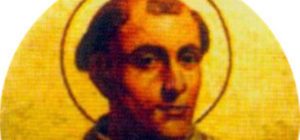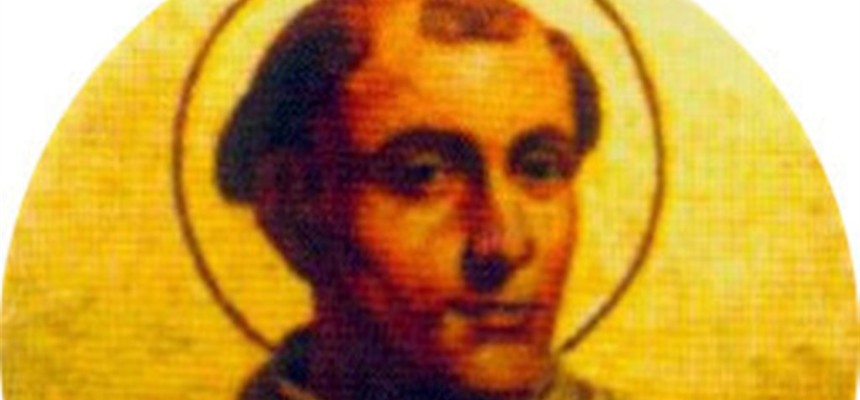
Roman by birth, Leo was the son of Rodwald, a man of Lombard descent. He was educated at the monastery of St. Martin, near St. Peter’s basilica. The young man became a Benedictine monk. Due to his obvious piety, Leo was ordained a sub-deacon by Pope Gregory IV. He was later ordained a cardinal-priest of Santi Quattro Coronati by Pope Sergius II.
On January 27, 847, Pope Sergius, shocked and bewildered by the attack of the Saracens on Rome and its environs, died suddenly. After two months, Leo, a popular cleric, was unanimously chosen to succeed the deceased pope. He did not ask permission of the emperor and extend the time without a pope. He had to get right to work.
Due to the extensive damage resulting from the Saracen attacks in the late summer and fall of the previous year, Sergius had to build a strong wall on the right side of the Tiber to protect the ravaged basilica of St. Peter. The enclosed territory, guarded by Castel Sant Angelo, was named Leonine City and was actually considered a separate town until the 16th century. The Saracens and Moors who had attacked the previous year had taken many of the Church’s treasures. As fate, or God, would have it, a storm came up as they escaped by ship and many ships crashed and sank. Days later, Romans came down to the seashore to find many bodies washed up on shore and the treasures worn or in pockets. The pope returned the treasures they found and rebuilt St. Peter’s and St. Paul’s. St. Peter’s was never again as magnificent as it had been.
He also had the walls around the small city rebuilt, including fifteen of the tall towers. He was able to procure money from the emperor, the surrounding cities and the agricultural colonies within the Duchy of Rome.
While still rebuilding, a project that took four years, the Saracens again readied an attack. Leo formed a coalition of cities, Rome, Naples, Amalfi and Goeta, to repel the enemy navy. The coalition was commanded by Cesarius, son of Duke Sergius I of Naples. After attacking the port city of Ostia, the enemy fleet rode up the Tiber towards Pontus. The coalition forces repelled them and drove them back to the sea. Again, a storm destroyed the Saracens and their ships. This is the most famous battle in the history of the papacy in the Middle Ages. After the repairs were made, in 852, Pope Leo blessed the structures with solemnity. The reestablished Pontus was given to exiled Corsicans. Other towns were also either rebuilt by Leo or others, with his encouragement. Later, in 854, Leo fortified Civitavecchia, a common Saracen target.
Pope Leo was noted for his attempts to bring rebellious bishops and political leaders into line with Rome. For this purpose, he conducted three synods during his reign. One, in 850, was for the enforcement of ecclesiastical discipline and learning. During that synod, the son of the emperor, Louis, was crowned co-emperor with his father. At this same synod, Cardinal Athanasius of San Marcello, the former librarian of Rome, was excommunicated for disobedience. Two other synods were of little importance. In 853, at the Council of Soissons, Archbishop Hincmar was censured for excommunicating an imperial vassal without papal permission. Duke Nomence of Brittany wanted independence from the Church. He deposed a number of bishops and replaced them with his own, then placed them under the jurisdiction of a metropolitan see. It took hundreds of years to get those dioceses back to the Archbishop of Tours. Pope Leo was working on a number of these problems when he died in July, 855.
Pope Leo IV was known as a skillful organizer, fundraiser and administrator. His greatest accomplishment is considered to be the strengthening of Rome’s defenses, repairing a number of churches and monasteries and forging alliances.
Leo had a figure of a rooster placed on top of either ole St. Peter’s Basilica or the old Constantinian Basilica. He said it was to remind the people of St. Peter’s denying Jesus just as the cock crowed. This was in keeping with Pope Gregory I, who said that the cock was the most suitable emblem of Christianity.
This pope was buried on July 17 of 855 at St. Peter’s. Years later, he was interred with the other Popes Leo. After that, Pope Leo the Great was separated out. His biographer and others have credited him with miracles and he was declared a saint at some point.


Recent Comments